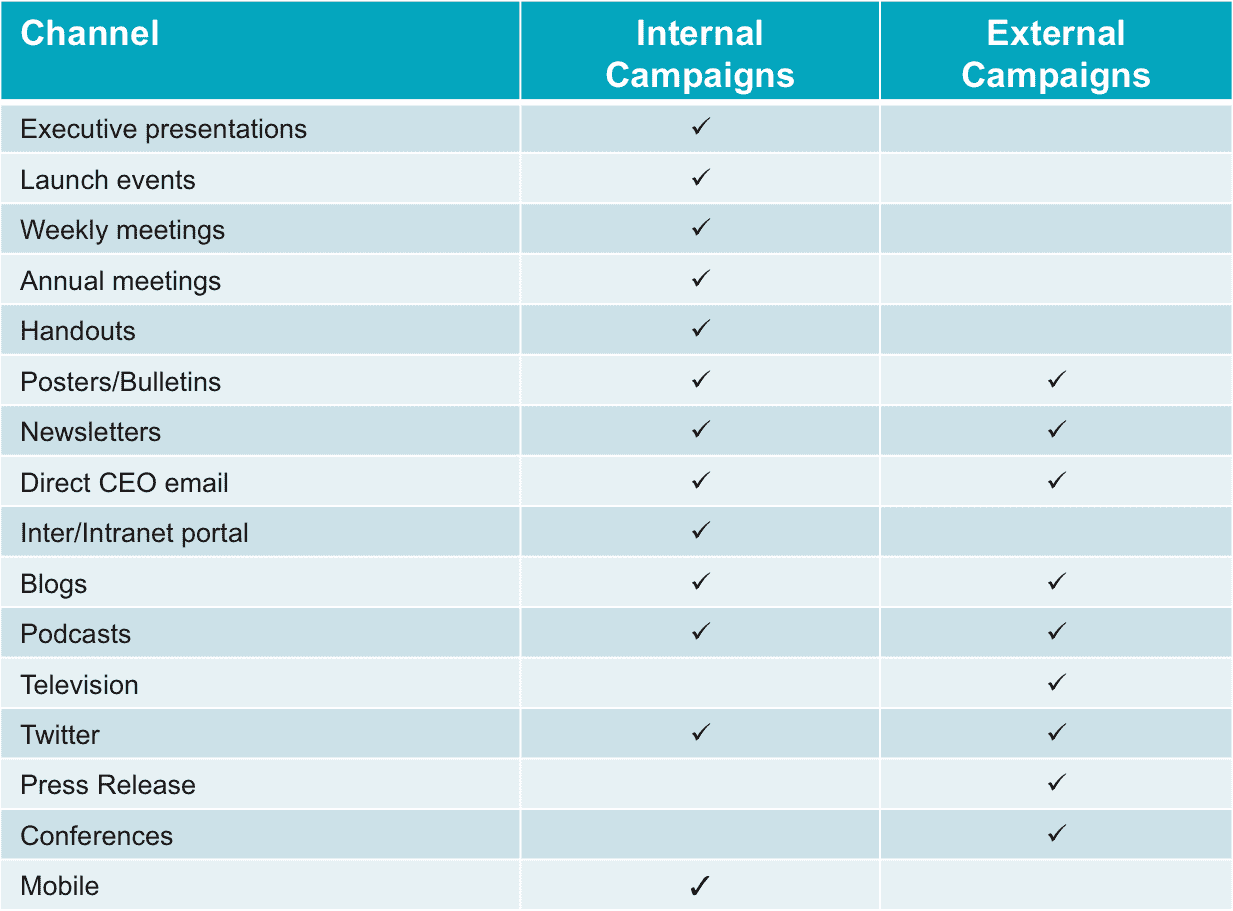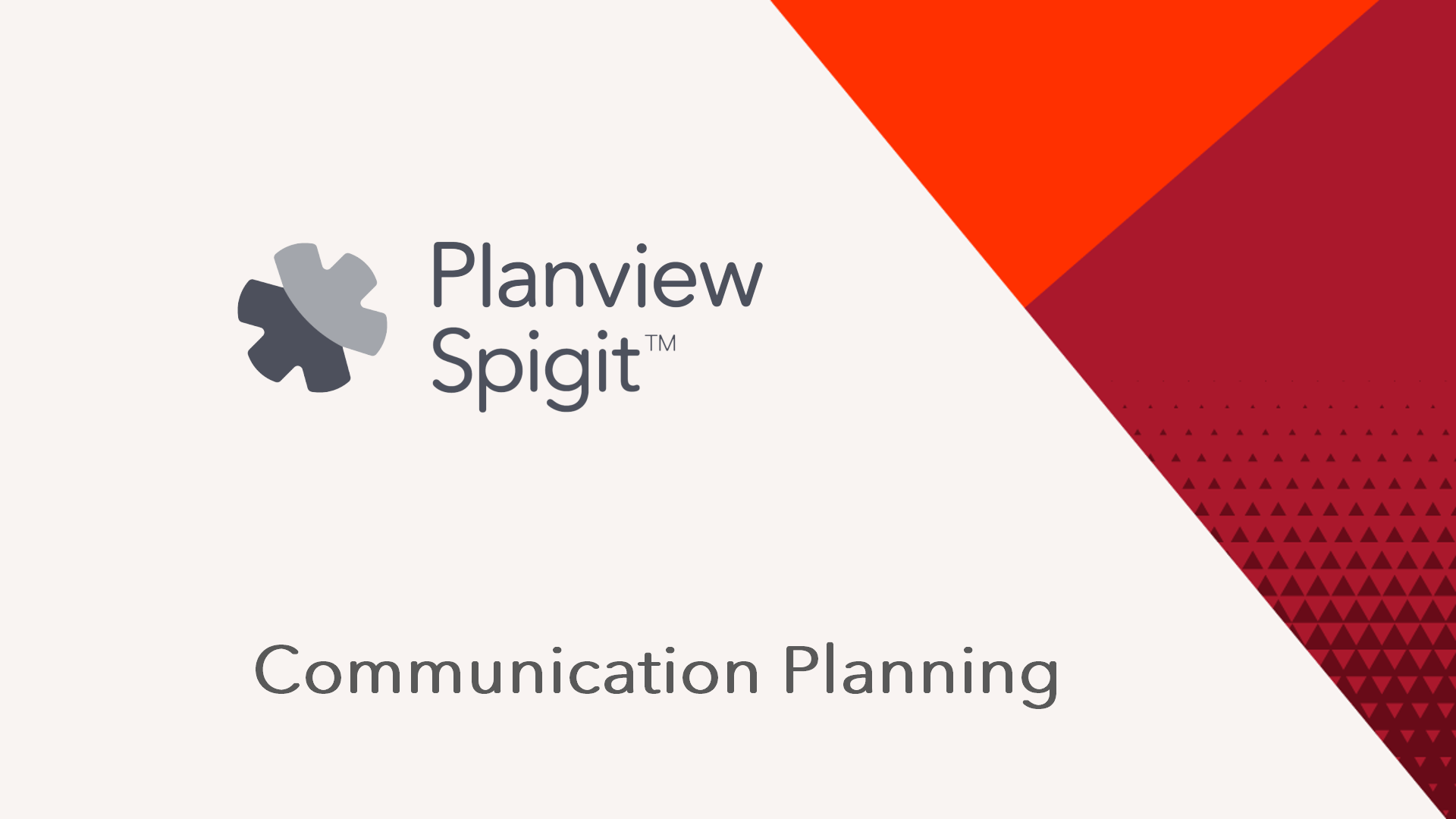Communications
Overview
Strong communications correlate with strong activity. Ensure you plan out communications prior to launch, and consider the key elements, as described in this article and video.
In this lesson, we'll share the key components to consider when planning a challenge.
Communication Planning; Duration 4 min
How It Works - Why Do We Need to Plan?
Communications plans have three core purposes that are important to address in equal measure to guarantee delivery.
The first and arguably most important reason for planning your communications is that they almost guarantee program success if they are delivered according to plan. At Planview IdeaPlace, we know that our customers who deliver comprehensive communications through planning are more likely to be successful than those who do not. Using the Planview IdeaPlace platform gives you an excellent chance for success, but communicating with your audience effectively boosts your chances of success even more.
The second purpose of communication planning is related to education. Communications are a great way of educating your crowd. This education piece can take many forms but generally focuses upon engaging the crowd through clear and concise delivery.
Finally, our third purpose is that of communicating clear goals. A clear communication plan and delivery should place the goals and purpose of the innovation program at its heart. In communicating these two pillars, we see a direct increase in both engagement and the likelihood of meeting your own success criteria. While this can vary from organization to organization, it is important to understand that goals and purpose are key variables in both general program activity as well as the quality of the engagement.

The three core purposes of a communications plan
With these three purposes in mind, let us now look at the key elements of the communication plan.
The Four Key Elements of the Mix
Communication plans have four encompassing elements that, when mixed successfully, can drive program success.

The four key elements of a communications plan
Let’s take this diagram in a clockwise direction, starting with channels.
Having varied communication channels really does correlate with successful innovation programs. It is all too easy to rely upon electronic communications in the form of email. The most successful programs communicate through a multi-channel approach that harnesses verbal communication, virtual or electronic communication, and finally written or physical media communication. How you blend this particular element will depend upon factors such as geography, demographics, and infrastructure, but it is something that we should always have at the front of our mind when planning communications.
Moving around the diagram, the audience becomes our second element. How we engage with the crowd is always important. Focusing too narrowly on one segment of the crowd causes problems for your engagement. Best practice dictates that your messaging should always appeal broadly to stakeholders, no matter who they are in the crowd. Successful programs look to have both broad and focused messaging into the crowd, which works to support their overall goals and success factors.
This ties in nicely with the element of branding. Without a doubt, having a brand associated with your program will help you in engaging your crowd. Customers who create brands and themes succeed in changing the mindset of the crowd away from what they're communicating being "business as usual" and into a fresher viewpoint. Strong brands will always stand out and engage, where corporate color schemes and more standard designs may not. This branding could be as simple as a word, such as "ignite" or "spark." Some customers even design a logo for their innovation program that helps them to tie communications back to the theme of the overall program. It’s certainly something to consider.
Our final and arguably most important element is that of sponsorship. Having a clearly visible senior sponsor boosts engagement like no other element. Imagine, as a member of your crowd, that you receive a communication from your CEO or another C-level executive, asking for your help. Those kinds of communications carry so much impact that we always stress their importance. The visibility could be as simple as an image and a welcome message, or you could even record a video message from your sponsor. No matter which way you do it, a link is created between your sponsor and your crowd, and a circle of trust is formed. Of course, the trust is cemented when ideas and collaboration are recognized and promoted by the sponsor in further communications. This is something we will also discuss in our rewards and recognition article. Be sure to check that out.
Having now solidified in our minds how the elements fit together, let us now look at how we make this a little more operational.
Considering the Plan
A good communication plan follows four key operational questions. We like to think of them in very simple terms.
First, what needs to be communicated?
This could be as simple as a launch message or a reminder, but always ask yourself what you are communicating. It really does help to make communications clearer.
Second, who is actually sending and receiving the communication?
This is something that is often missed. Do you need the CEO’s Executive Assistant to send the email, or is it your corporate communications team? Which elements of the crowd are receiving the email? Do I need to make it stand out with a brand or a name? These are all typical questions that we should be asking ourselves when looking at the mechanics of sending the communication.
Third, when do we communicate?
A common pitfall is to communicate heavily prior to the launch of the program and then to communicate at the end. The missing part, during the event communication, is also important. Having a top and tail approach works well, but don’t forget that your crowd require stimulation throughout the event to remind them of the importance of particular phases of activity such as idea posting, pairwise voting, or predictions. This is certainly an element that makes a good plan even better.
Finally, which channels are being used?
Having answered the three questions above, we may discover that we are going to need to repeat communication into multiple channels. If that is the case, be sure to cover that in your plan. Clearly state the message, the responsible sender, the timing, and the communication channels to be used.
If you follow these general rules, you are setting yourself up for success. Now, let's see what kinds of options we have to communicate to our crowd.
Examples of Communication Tools
The table below covers the variety of options that we have for communicating with our crowd.
These options cover face to face, electronic, and written communication methods that we have seen from our vast customer base.
They are designed to be a toolkit of options that we have at our disposal to enable a stronger communication delivery.

Communication tools
In mixing the physical, electronic, and written channels, we can achieve maximum coverage for our innovation program.
Some great examples to point out on the list are Executive presentations or town hall meetings, direct CEO emails, blogs, and podcasts, which all work really well for internal challenges.
For external challenges with the public, the focus switches to social media, press releases, advertising, and mobile channels to ensure that the maximum reach is attained.
The key thing to take away from this table is that a good blend of options is what supports a good communications plan.
Expand the sections below for more information.


